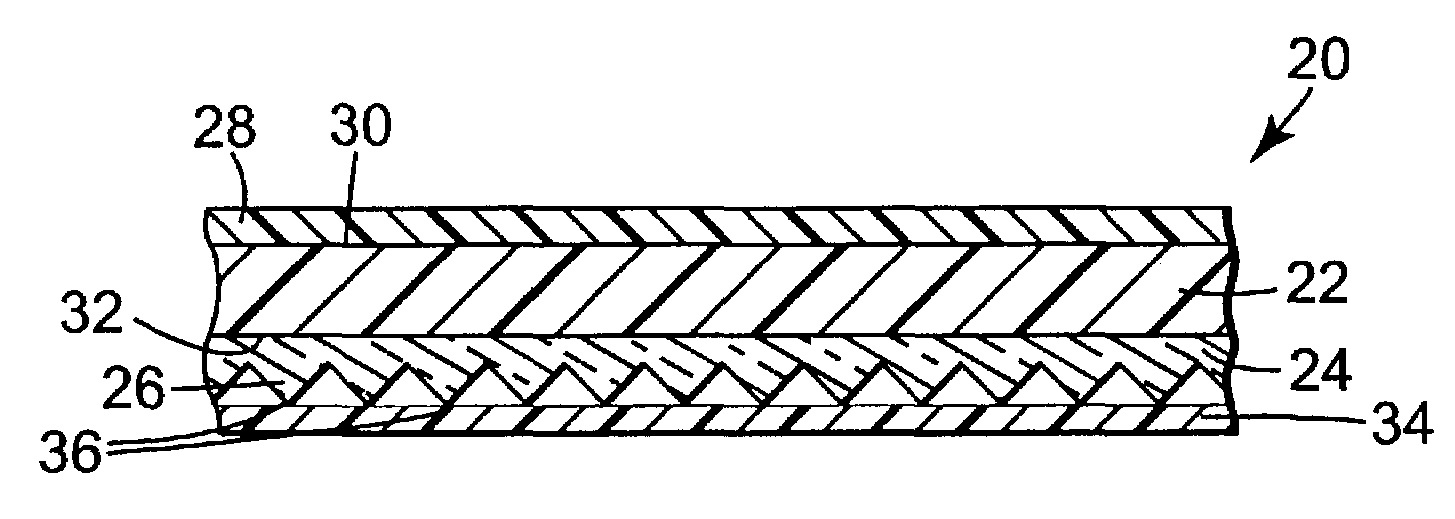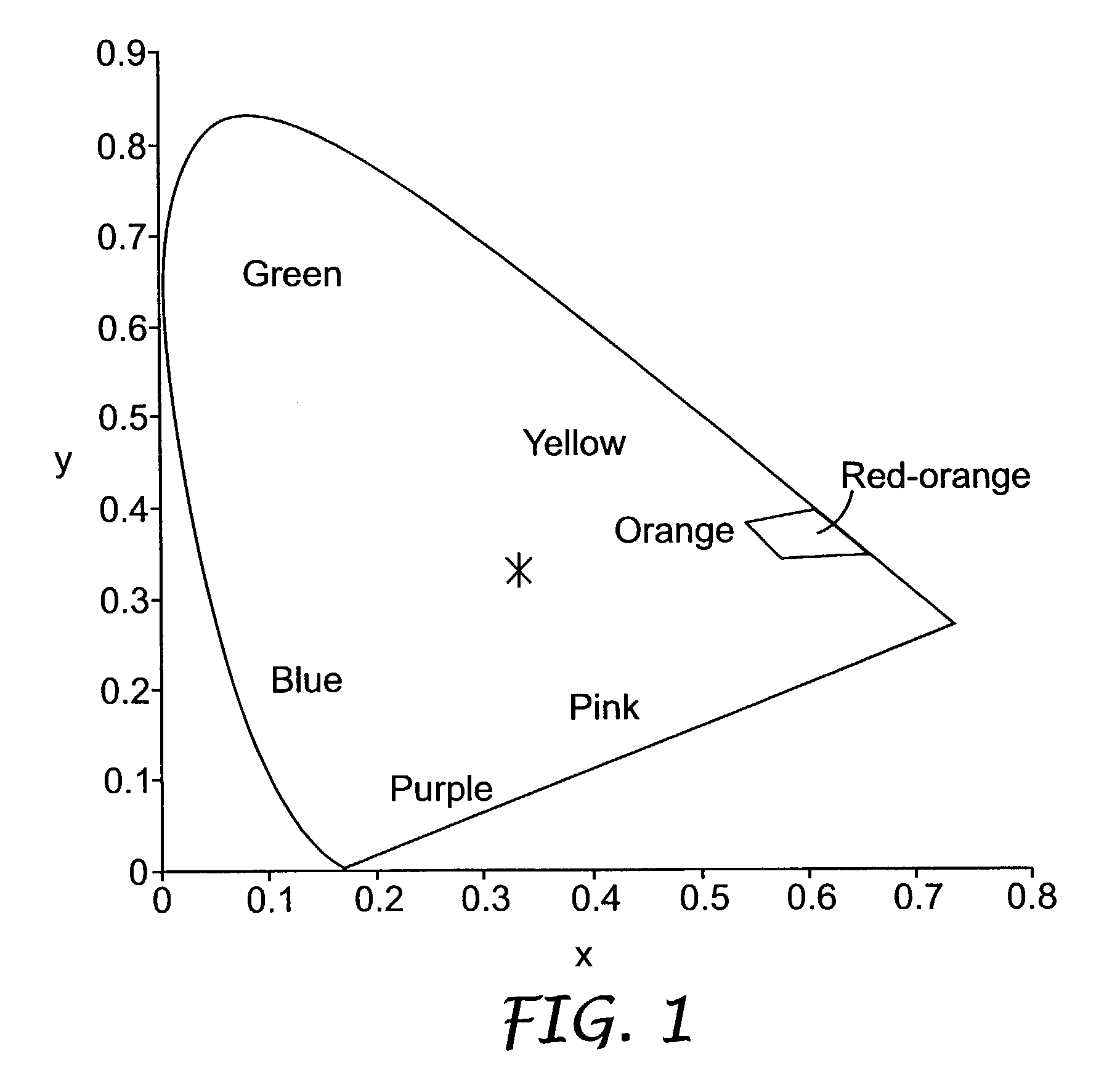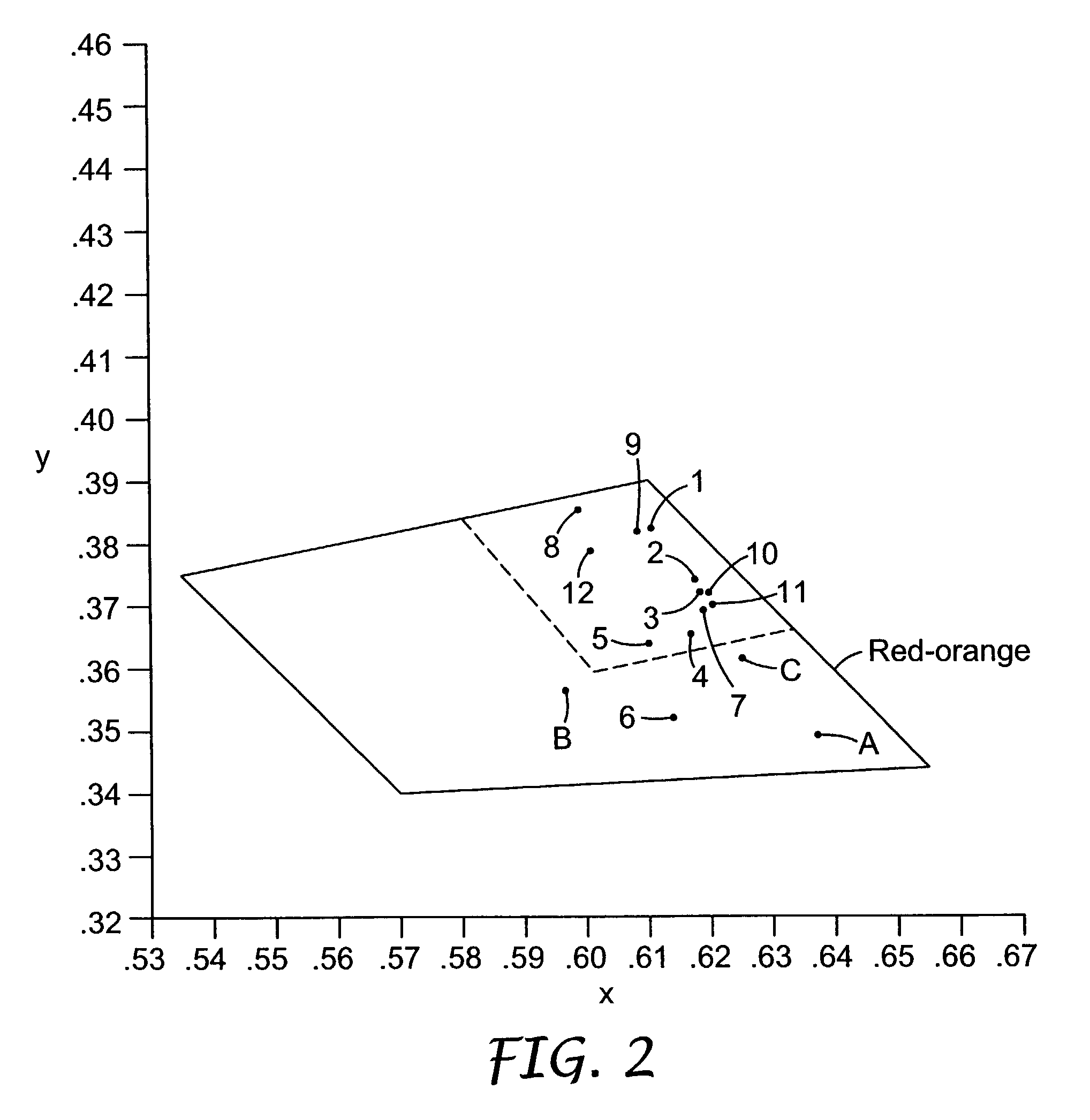Fluorescent red-orange retroreflective sheeting
a fluorescent red-orange and retroreflective technology, applied in the direction of roads, instruments, traffic signals, etc., can solve the problems of daytime brightness, unsatisfactory retroreflectivity, and difficulty in formulating true fluorescent red-orange products with acceptable brightness and retroreflectivity properties, and achieve good balance, high brightness, and high retroreflectivity
- Summary
- Abstract
- Description
- Claims
- Application Information
AI Technical Summary
Benefits of technology
Problems solved by technology
Method used
Image
Examples
examples
[0035]The following examples show the color, brightness, and retroreflectivity of prior art red-orange retroreflective products as well as other retroreflective sheeting embodiments disclosed herein. The articles of Examples 1-11 were formed by mixing dyes into plasticized polyvinyl chloride (PVC) using a mixing head available from C.W. Brabender Instruments, Inc. of South Hackensack, N.J. at a rotor speed of 100 revolutions per minute (rpm). Unless otherwise noted, the total amount of dye in the blend of each of the examples was 0.1 wt %. The mixture was then pressed into films approximately 0.25 mm thick, using a hydraulic press whose platens had been heated to 180° C. The pressed films were immediately placed between water-cooled platens in a second press, and under pressure to quench the films. An array of cube corner elements was then formed on one major surface of the produced film by a casting and curing process, the cube corner elements having the same size, geometry, and co...
examples 1-4
[0043]Examples 1-4 employed HOSTASOL 3G (Yellow) fluorescent dye mixed with HOSTASOL GG (2G) (Red) fluorescent dye (except for Example 4, which employed only HOSTASOL GG (2G) (Red) fluorescent dye). The dye percentages listed are relative amounts; recall that the total amount of dye in these examples is 0.1 wt %. The measured optical properties of Examples 1-4 are summarized in Table 1.
[0044]
TABLE 1%%AverageExampleHostasolHostasolRa (cd / LuminanceCIE ColorNo.3GGG (2G)lux / m2)Factor (Y)Coordinates1307064633.00.6105,0.38242208061338.00.6175,0.37413109058034.80.6183,0.37214010054635.00.6168,0.3654
examples 5-6
[0045]Examples 5-6 employed HOSTASOL 3G (Yellow) fluorescent dye mixed with HOSTASOL 5B (Red) fluorescent dye. The dye percentage listed is a relative amount; recall that the total amount of dye in these examples is 0.1 wt %. The measured optical properties of these Example are summarized in TABLE 2.
[0046]
TABLE 2%%AverageExampleHostasolHostasolRa (cd / LuminanceCIE ColorNo.3G5Blux / m2)Factor (Y)Coordinates5307054923.60.6100,0.36396208052422.20.6139,0.352
PUM
| Property | Measurement | Unit |
|---|---|---|
| thickness | aaaaa | aaaaa |
| thickness | aaaaa | aaaaa |
| thickness | aaaaa | aaaaa |
Abstract
Description
Claims
Application Information
 Login to view more
Login to view more - R&D Engineer
- R&D Manager
- IP Professional
- Industry Leading Data Capabilities
- Powerful AI technology
- Patent DNA Extraction
Browse by: Latest US Patents, China's latest patents, Technical Efficacy Thesaurus, Application Domain, Technology Topic.
© 2024 PatSnap. All rights reserved.Legal|Privacy policy|Modern Slavery Act Transparency Statement|Sitemap



